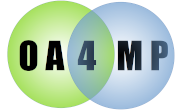| Property name |
Mutator |
Comment |
| identifier |
getIdentifier, setIdentifier |
A client generated unique string (this is URI) which identifies this. It will
be stored as a cookie in the user's browser and this cookie will later be used to find the correct asset.
This is
necessary to keep the private key, username and certificates associated with each other. You specify this
at the time of the initial request to the OA4MPService.
|
| username |
getUsername, setUsername |
The name the system used when contacting MyProxy. This usually be the
name the user supplied at login, although some servers (such as CILogon) use another alias.
|
| privateKey |
getPrivateKey, setPrivateKey |
The private key that the system generated when requesting this certificate.
The certificate is useless without this generally.
|
| certificates |
getCertificates, setCertificates |
An array of X509Certificate objects. This is the certificate chain
returned
from MyProxy. There is always at least one element after a sucessful delegation.
|
| redirect |
getRedirect, setRedirect |
The URI that was returned by the OA4MP server and to which the user was
redirected.
|
| creationTime |
getCreationTime, setCreationTime |
The timestamp for when this asset was created. This is used by the
automatic cleanup thread, if that facility is enabled or administrators may use this directly if they
wish to implement their own aging/cleanup policies.
|
| accessToken |
getAccessToken, setAccessToken |
Get the current access token. OAuth 2.0
assets only. |
| refreshToken |
getRefreshToken, setRefreshToken |
Get the current refresh token. OAuth 2.0
assets only. |

